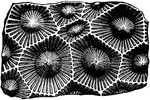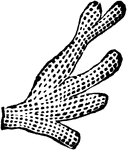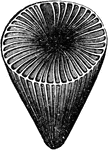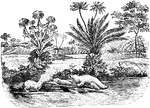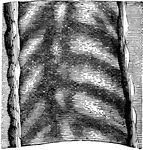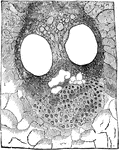The Paleontology ClipArt gallery offers 87 illustrations of the study of ancient life, particularly through an examination of the fossil record.
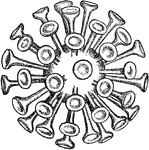
Rhabdosphere
When coccoliths are covered with rods, they are called rhabdoliths, and form a rhabdosphere.

Rotalia Globulosa
This illustration shows the calcareous shell Rotalia globulosa. These shells are mostly very small,…
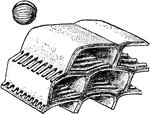
Schwagerina Verbecki
A typical foraminiferal shell shaped more or less like a football in form (diagrammatical view).

Sigillaria
"a Sigillaria (restored); b leaflet; c & d impressions on bark; e section of stem; f portion of cylinder,…
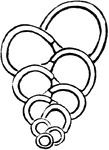
Textilaria Globulosa
This illustration shows the calcareous shell Textilaria globulosa. These shells are mostly very small,…

Trilobite
"Vertical cross-section of a Trilobite (Calymene). i., Intestine; s., shield; L., endopodite; e., exopodite;…

Trilobite
"Trilobite from the Silurian rocks. Pultowa, Russia (Illaenus crassicauda)." -Taylor, 1904

Asaphus Gigas a Trilobite
Asaphus is a genus containing at least 35 species of Ordovician trilobites found primarily in Europe.…

Dicellocephalus Minnesotenis a Trilobite
Trilobites ("three-lobes") are extinct marine arthropods that form the class Trilobita. Why the trilobites…
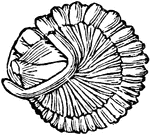
Dicellocephalus Minnesotenis a Trilobite
Trilobites ("three-lobes") are extinct marine arthropods that form the class Trilobita. Why the trilobites…

Dicellocephalus Minnesotenis a Trilobite
Trilobites ("three-lobes") are extinct marine arthropods that form the class Trilobita.The earliest…

Triloculina Josephina
This illustration shows the calcareous shell Triloculina Josephina. These shells are mostly very small,…
